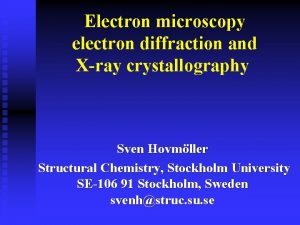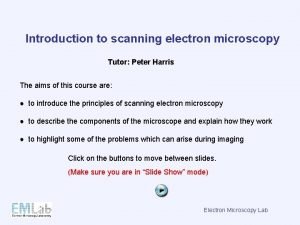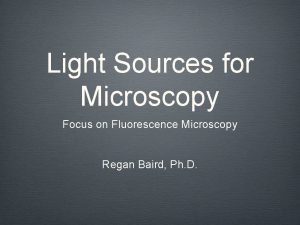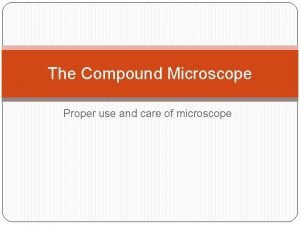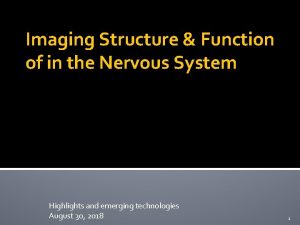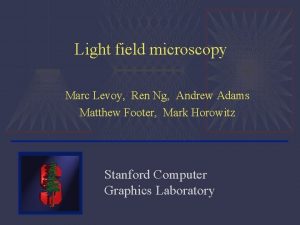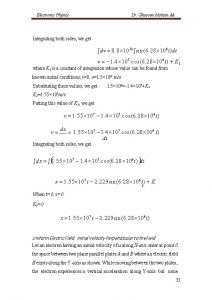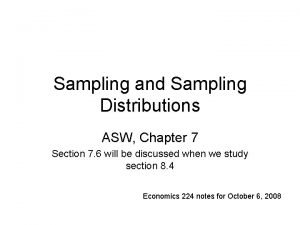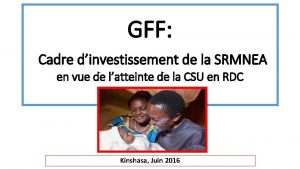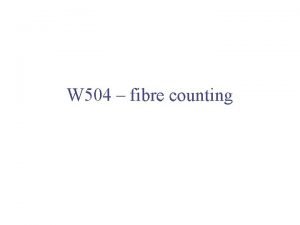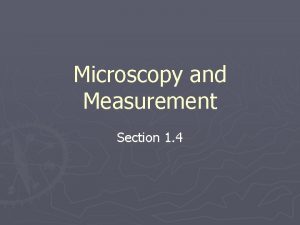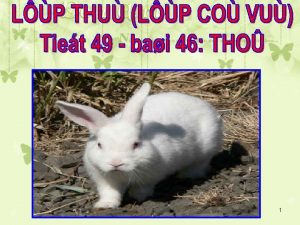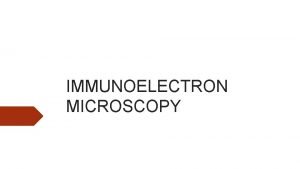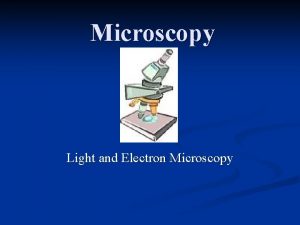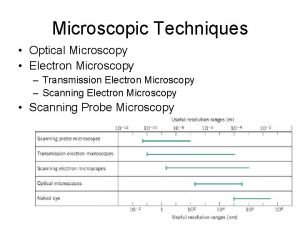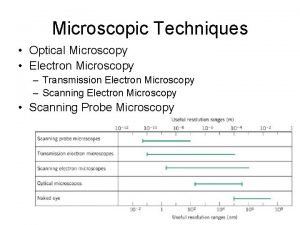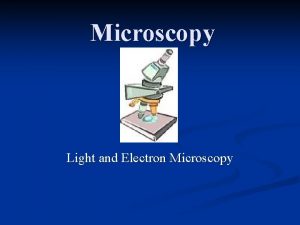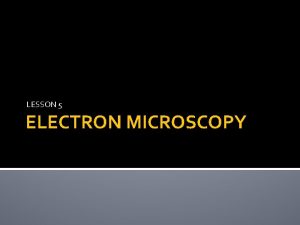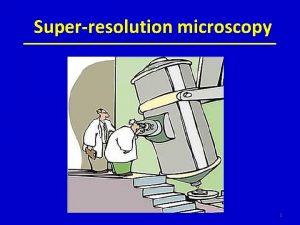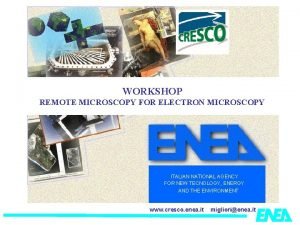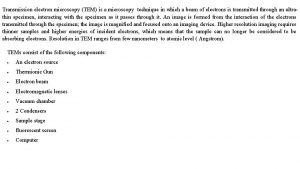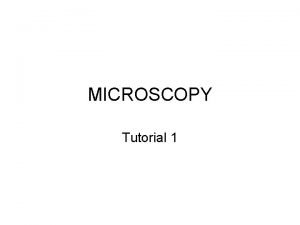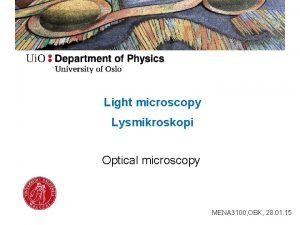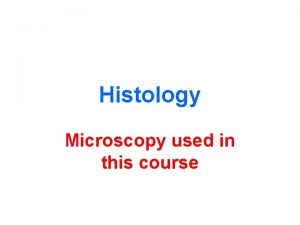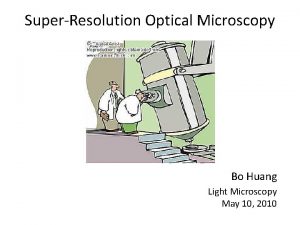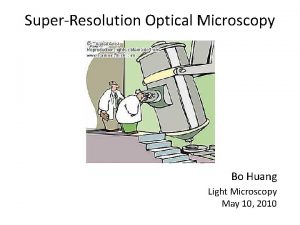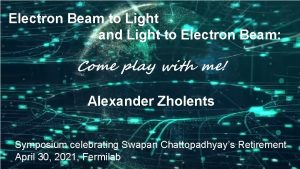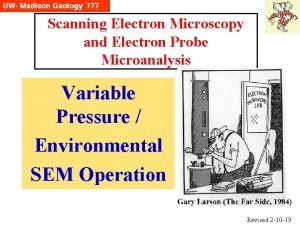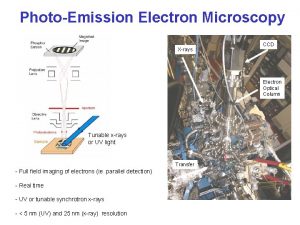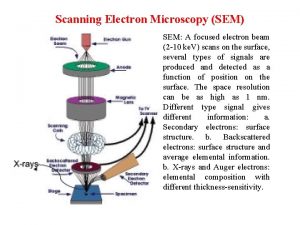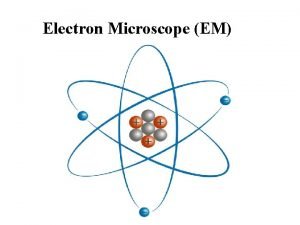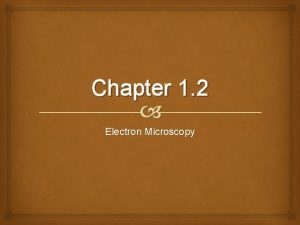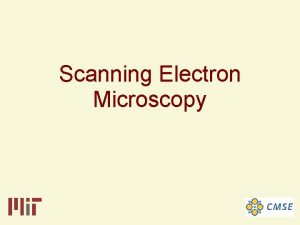Introduction to Light and Electron Microscopy Neu 259


























- Slides: 26

Introduction to Light and Electron Microscopy Neu 259 Spring 2006 Introduction to Deconvolution Image Processing James Bouwer UCSD

Outline Convolution: 2 D: • Airy Disk (Light Point Spread Function) • Convolution with an Image 3 D: • 3 D Point Spread Function • Convolution with a Volume Deconvolution: • Frequency space decomposition • Fourier Transforms • Application of the Deconvolution Theorem Some Examples:

The Microscope Optical Train is Complex • Every lens element alters the image in some way • We call this the image transfer function: h(x, y, z) • The image transfer function of the system is a convolution of all of the image transfer functions of all the lens elements and apertures in the optical train

The Definition of Convolution: Con-vo-lut-ed: adj. 1. Having numerous overlapping coils or folds: a convoluted seashell. 2. Intricate; complicated: convoluted legal language; convoluted reasoning. The American Heritage® Dictionary of the English Language, Fourth Edition

Formation of an Airy Disk Pattern A point in the object space A point convolved with the transfer Microscope function Impulse Response Function [ Point Spread Function (psf)]

Impulse Response Function Applied to a line A great advantage is afforded by the ability to express the response of the optical system to an arbitrary input in terms of the response to certain “elementary” functions into which the input has been decomposed Line Transfer Function

How the psf (Impulse Response) Effects Resolution slide courtesy of Edgar Garduno

Image Transfer Function h(x, y) Object Image

Theoretical Model of the Impulse Transfer Function, h(x, y) (PSF) where J 1=Bessel function of the first kind

The Definition of Convolution: Con-vo-lut-ed: adj. 1. Having numerous overlapping coils or folds: a convoluted seashell. 2. Intricate; complicated: convoluted legal language; convoluted reasoning. The American Heritage® Dictionary of the English Language, Fourth Edition Convoluted Mess!

Spatial Frequency Decomposition Fourier Transform 0. 25µm myelin • Any image can be decomposed into a series of sines and cosines added together to give the image Amplitudes Phase Fourier Transform

Fourier Transform of the Myelin Image Low frequency High frequency

Mathematical Formulation of the Fourier Transform 2 -D Fourier Transform: Real Space to. . Frequency Space Inverse 2 -D Fourier Transform: Frequency Space to. . Real Space

Inverse Fourier Transform of the Fourier Transform Returns the original Image Fourier transform of myelin -1 F = Very Powerful Tool !

The Wonderful, Great and Amazing Convolution Theorem If and Then: Remembering that the image intensity is a convolution of the impulse function h(x, y) and the object Iobject(x, y) The object intensity can be easily de-convolved from the Smear of the impulse function (PSF)

Deconvolution using the Convolution Theorem The image is a convolution of the impulse function h(x, y) (PSF) and the object (the sample): Therefore, the Fourier transform of the image is just the Fourier transform of object times the Fourier transform of the impulse function (PSF) in frequency space So, to obtain the object, we simply divide by the Fourier transform of the impulse function (PSF)

Transform back to real space Finally, we obtain the deconvolved object (sample) by applying an inverse Fourier transform A simple division in frequency space yields the Object intensity !

Let’s Run though it… Step 1: Acquire the image and it’s Fourier transform Convoluted Image Fourier Transform

Steps to Deconvolution… Step 2: Obtain the impulse function (PSF) and the Fourier transform of the impulse function (PSF) Point spread function Fourier transform

Steps in the Deconvolution… Step 3: Divide and inverse Fourier transform -1 F


3 D Out-of-focus Point Spread Function 3 D Impulse Response z x y 2 -D PSFs vs. z-height

A Real 3 -D PSF From the RTS-2000 100 nm Diameter Fluorescent Latex Bead Imaged with 50 nm Steps in z



… Plenty more to this story … Many commercial software packages are available in at the NCMIR
 Electron microscopy data bank
Electron microscopy data bank Bacteriorhodopsin
Bacteriorhodopsin Scanning electron microscopy
Scanning electron microscopy Light sources for fluorescence microscopy
Light sources for fluorescence microscopy Compound microscope uses
Compound microscope uses Light sheet microscopy
Light sheet microscopy Marc levoy
Marc levoy Light light light chapter 23
Light light light chapter 23 Light light light chapter 22
Light light light chapter 22 Chapter 22
Chapter 22 Usd259 portal
Usd259 portal Omis 259
Omis 259 Homework 259
Homework 259 Prairielearn ubc
Prairielearn ubc Physics 259
Physics 259 Asw-259
Asw-259 Prescriptive grammar example
Prescriptive grammar example Sccs library
Sccs library Parentvue usd 259
Parentvue usd 259 Light microscope vs electron microscope
Light microscope vs electron microscope Advantage of phase contrast microscope
Advantage of phase contrast microscope Microscopy and measurement section 1-4 review
Microscopy and measurement section 1-4 review Nêu các bước chèn hình ảnh
Nêu các bước chèn hình ảnh Nếu nhiệt độ dầu bôi trơn
Nếu nhiệt độ dầu bôi trơn Turnitin neu
Turnitin neu Nêu ưu điểm của sự thai sinh
Nêu ưu điểm của sự thai sinh Nêu vai trò của nghề làm vườn
Nêu vai trò của nghề làm vườn

